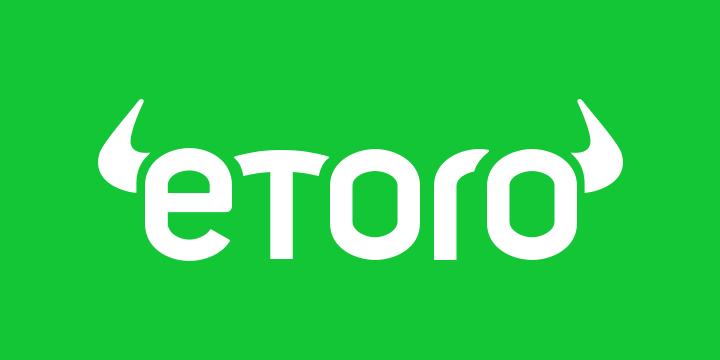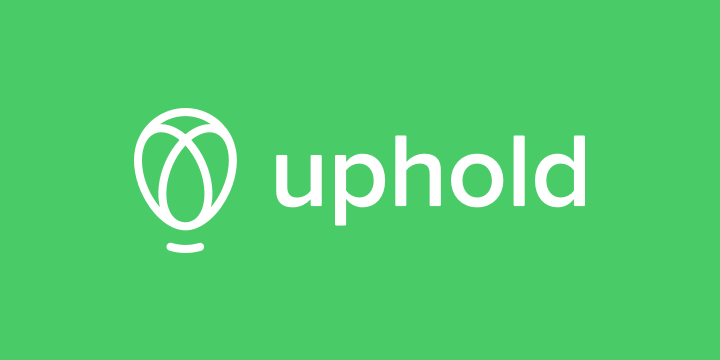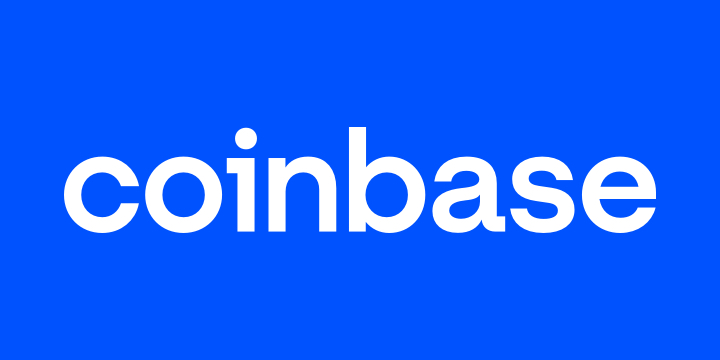How to Trade IOTA in 2024 - Complete Guide
...
As mainstream acceptance of blockchains and cryptocurrencies continues to grow in 2024, the prices of tokens have also witnessed a substantial boost. IOTA’s native token is no exception and has attracted many new and experienced traders who want to capitalise on market volatility. If done correctly, trading IOTA tokens can run you into some serious profits.
If you are just starting your journey as a new trader, this guide will teach you how to trade IOTA. You will learn about fundamental and technical analysis that can help you make potentially accurate predictions about IOTA’s price. You will also be able to make more informed decisions regarding trading strategies.
What is IOTA Trading and how is It Different from a Standard Purchase?
Many new traders believe trading and investment to be the same. That’s not true. Crypto investment involves long-term ownership of IOTA coins, holding them in anticipation of a price increase. On the other hand, crypto trading refers to the process of betting on IOTA prices using derivatives such as futures, options, and Contracts for Difference (CFDs). When you trade cryptocurrency, you don’t own IOTA, only a contract that gives you the right to the capital you’ve invested plus any profits or losses you might make once the trader is closed or terminated.
There is a wide range of IOTA derivatives that you can use to open your positions. That being said, there are three that are immensely popular in crypto trading circles.
- CFDs – Contracts for Difference or CFDs are derivative products that enable traders to speculate on the price of their underlying asset, for instance, IOTA. Since they’re only a representation of price, you don’t actually have to buy IOTA and store it. You can simply purchase CFDs and sell them when the price is right.
- Futures – This trading contract binds traders to close their positions at a pre-specified date. If their price prediction is correct, they make financial gains. If not, they have to bear a loss.
- Options – This trading contract is used more often than futures due to its flexibility. It doesn’t bind the traders to buy IOTA but gives them an option to do so. If the price prediction is correct, they can choose to buy IOTA at a specific date. If it’s not, they don’t need to close their position and can pay a small fee, or ‘premium’, which is the cost of the contract itself.
You can buy and sell IOTA much more quickly and conveniently with derivatives. If your objective involves earning short-term profits, then derivatives provide you with a much more convenient path than actually purchasing and holding IOTA, which can be a complicated and drawn-out process.
You have to bear in mind that when you select a broker for trading, you should choose one that’s registered and ensures adherence to Anti-Money Laundering (AML) and Know Your Customer (KYC) regulations. If you are trading IOTA through regulated trade platforms, it is doubtful that you’ll run into any frauds or scams. Certain derivatives’ availability and accompanying features depend on the country you are in, along with the country the brokerage service is registered in.
One of the most popular trading strategies for new traders is copy trading, where they replicate the trades of seasoned professionals using a feature offered by several leading social brokerage platforms. You have to remember that while this improves your chances of opening profitable positions, it can also be quite risky. Experienced traders often trade in high volume, and their transactional expenses are pretty low compared to their total trade amount. Moreover, they also hedge their positions to minimise their risk. That’s why you mustn’t blindly follow a particular trader but do your own research.
Where Can I Trade IOTA?
To ensure that you make an informed decision, we have assessed all the popular trading platforms and shortlisted the best. Here are our brokers and exchange recommendations for trading IOTA coins.
Online Brokers
When you trade through a cryptocurrency broker, you don’t actually buy the token you’re trading. You just purchase a contract that gives you the right to the capital you’ve invested along with any profits or losses you might make when your position is closed or eventually terminated. Brokers offer different types of derivatives, including futures, options, and contracts for difference (CFDs).
Benefits of Using a Broker to Trade IOTA
One of the primary reasons traders choose trading through derivatives is speed and convenience. Since you don’t have to buy cryptocurrencies, you don’t need to deal with the issues associated with owning and storing IOTA. Apart from that, you can increase your profits through leveraged trading and start trading with seed capital as low as only $100. Brokers also comply with KYC and AML guidelines to provide you with a safe and secure trading environment. They have to maintain a high level of transparency in terms of transactional costs.
Derivative Exchanges
In the beginning, crypto exchanges only focused on buying and selling cryptocurrencies like IOTA. Recently, the increased potential of cryptocurrencies as an investment and trading option has pushed exchanges to offer trading derivatives as well. Most exchanges now offer CFDs, futures, options, and other derivative products. If you have created an account on one of the leading platforms, such as Binance, Poloniex, or Coinbase, you don’t need to make a new account to place your first trade. Moreover, exchanges also enable you to leverage your positions which means you can invest more capital than you have. However, leveraged trades are highly risky, and you need to minimise your risk when opening such positions, as they will multiply losses as well as profits.
Benefits of Using an Exchange to Trade IOTA
Cryptocurrency exchanges are comparatively more feature-rich and versatile and enable you to buy and sell a wider variety of coins, including IOTA. You also get the option to withdraw your IOTA tokens whenever you need them. Apart from that, you also get more payment modes to withdraw and deposit your funds. Exchanges are generally more user-friendly than brokerage websites which can be complicated and intimidating. With a crypto exchange, you can open highly leveraged positions, plus you get the services of a broker and an exchange combined in one.
Our Step-by-Step Guide on IOTA Trading
For your clear understanding and guidance, we have come up with a detailed guide that takes you through the process of trading IOTA on exchanges and brokerage websites.
1. Combine Fundamental and Technical Analysis
Cryptocurrency trading involves qualitative and quantitative analyses that enable you to improve your success rate. The qualitative or fundamental analysis includes the following:
- News – Being one of the most popular cryptocurrencies, IOTA’s price can be affected by many factors. You have to keep yourself updated about the news related to the coin, including any technological leaps, new developments, updates, and analyses of key opinion leaders.
- Supply and Demand – Like any other commodity in the world, supply and demand dynamics also affect the price of IOTA. Currently, there are more than 2.7 billion IOTA tokens in circulation, and any fluctuation in their quantity can impact the price.
- Follow the General Rule of Economics – Price and demand are correlated while price and supply are inversely correlated. It means that if demand increases, the price will rise, but if supply increases, the price will fall.
Quantitative analysis includes observing and analysing data and statistics to draw insights that can help you make evidence-based trading decisions. Key technical analysis indicators include:
- Moving Averages – This indicator considers previous IOTA prices at regular intervals to determine average price movements. Moving averages change daily and allow traders to identify trends to determine how the price will behave in the next few days.
- Relative Strength Index – Featuring oversold and overbought indicators, the relative strength index is all about market sentiment. If IOTA’s price sees an increase with an overbought signal, it means that the price is likely to decrease soon. On the other hand, if the price declines with an oversold signal, it means the price has upward movement potential.
- Moving Average Convergence Divergence – This particular marker determines the variation between a 12 and 26-period exponential moving average or EMA. It is termed Moving Average Convergence Divergence (MACD), and it’s used to identify traders’ overall sentiment.
2. Choosing a Trading Strategy
Every trader wants to maximise their profits, but they need to deploy a wide range of strategies to get to that point. Let’s discuss the most popular trading strategies so you can identify which one suits your needs and trading objectives the best.
- HODL – This represents a misspelling of ‘hold’, which became popular after a trader posted a rant about Bitcoin prices. This trading strategy is more of a long-term investment, as you buy IOTA tokens and hold onto them for months or even years before cashing out.
- Day Trading – This trading strategy involves day-to-day trading where traders attempt to capitalise on the price fluctuations of IOTA. This strategy includes analysing quantitative and qualitative factors to buy IOTA as low as possible and sell as high as possible over a short period.
- Swing Trading – This is like day trading but spans a period of a few days or weeks. Because of the extended period of trades, this strategy involves analysing the market and making decisions based on your analysis to determine when IOTA will swing from a downtrend to an uptrend.
- Hedging – This is the process of minimising your risk by creating a supportive position against your primary trade. It means that if the IOTA price doesn’t respond according to your predictions, you will still receive some profits from this hedging trade.
- Scalping – This strategy is also like day trading but for a much shorter duration that doesn’t last more than a few minutes. While the gains are small, traders have the opportunity to open and close multiple positions during the day, allowing for more frequent profits.
3. Select an Appropriate Platform for your Needs
Before trading IOTA, the first decision you need to make is to choose the best platform for your circumstances and trading objectives. Profitability and potential of trade success differ from platform to platform, and you need to understand all aspects to ensure you are optimising your profits. Broker platforms are more trading-focused than exchanges and usually enable you to trade in larger volumes. But if you choose an exchange that offers derivatives, you can get access to a better variety of cryptocurrencies and altcoins such as IOTA for trading. On exchanges, you also can take higher risks through leveraged positions.
Whether you choose a broker or an exchange, you need to ensure that it is registered and adheres to KYC and AML regulations. Platforms that are either not registered or don’t comply with KYC and AML regulations can be closed without any notification, and they are also prone to fraud and scams.
4. Setting Up Your Account
Once you have chosen your platform, the next step is to sign up. Use a strong password and provide a secure email address. Your account will be verified through an email. After you’ve gone through account verification, you will also need to verify your identity for KYC and AML regulations. You can provide any government-issued ID for identity validation, along with a picture of yourself and some proof of address.
The next step involves depositing your seed capital that will be used to finance your trades. You can use both digital and fiat currencies to fund your account, depending on the platform you choose.
5. Prepare your Trading Position
Once you have made an account on a trading platform and deposited your funds, you can begin IOTA trading by clicking on the ‘Trade’ button. You will see a wide range of interfaces on different trading platforms, but there will be several common components, including the order book, a trading section, and a price graph.
Short or Long Positions?
When traders think that the IOTA coin’s price will surge, they can open a long position, which involves buying at a lower price and trying to sell high. But if the trader believes that the price will decline in the coming hours, they can open a short position, where they sell high, then buy lower afterwards. This is also called shorting and is a strategy that must be executed with robust risk management: if the price of IOTA goes up instead of down, short trades will incur losses.
Limit or Market Order
If an order uses the market price of IOTA for trading, it’s called a market order. You only have to enter the amount you want to buy or sell to execute market orders. On the other hand, if you want to buy at a different price, you can create a limit order where you will have to enter the price at which you want to buy IOTA. It may take time to execute limit orders, as they will only succeed when the market price aligns with the value you have entered.
Trade Position Amount and Leverage
Your trade position sum is the amount you have invested in a trade. You have the option to maximise the usage of your trade position sum by opening a leveraged trade that enables you to benefit from a bullish pattern. Trading platforms mention leveraged trading in terms of ratios. For example, 10:1 means you have 10x leverage, and if you invest $100, your profits or losses will be calculated as if you’ve put in $1,000.
Risk Management: How to Decide the Right Stop-Loss and Take Profit values for Your IOTA Trade
If the price of IOTA coins doesn’t respond according to your prediction, you can use a stop-loss order to limit your losses. Stop-loss orders are easy to initiate as all you have to do is provide two values – the first is the stop value at which you want to activate your loss mitigation trade. The second is the limit price at which this trade will actually execute.
Review and Execute Your IOTA Order
Before initiating your order, make sure that all the values you’ve entered are correct and you have chosen all the right options. This may take time initially, but it’ll turn into a habit as you become more experienced.
Close Your Trade for Profits or Limit your Losses
Traders who have carried out their due diligence and technical analysis are more likely to have profitable trades. You can close the position manually or use take-profit orders, which terminate automatically once IOTA has reached a certain price. You can reduce your trading risk by using a combination of take-profit and stop-loss orders.
Other Considerations
One of the most critical decisions in your trading journey will be your choice of platform. If you plan to trade a lot, make sure you choose somewhere with a competitive fee structure to avoid charges eating into your profits excessively, for example. Always do your due diligence as well itoavoid losing out to scammers.
Carefully review all of the advice in this guide, and you should be able to discern what trading style will serve you best. Get your hands dirty and start exploiting IOTA’s price movements for profit when you are ready.


